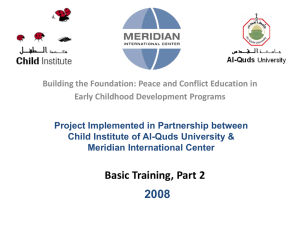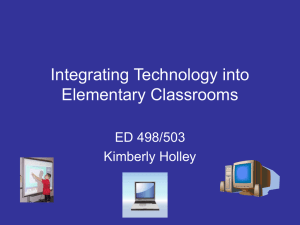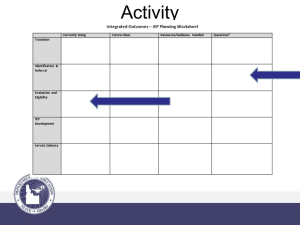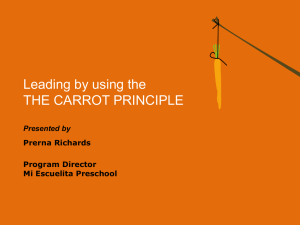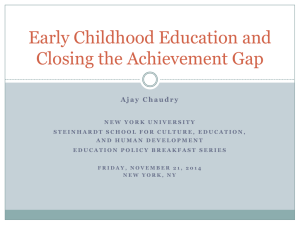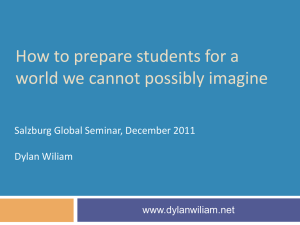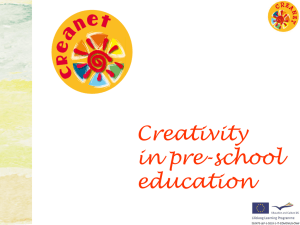Preschool Education and Student Achievement in Serbia: Evidence
advertisement
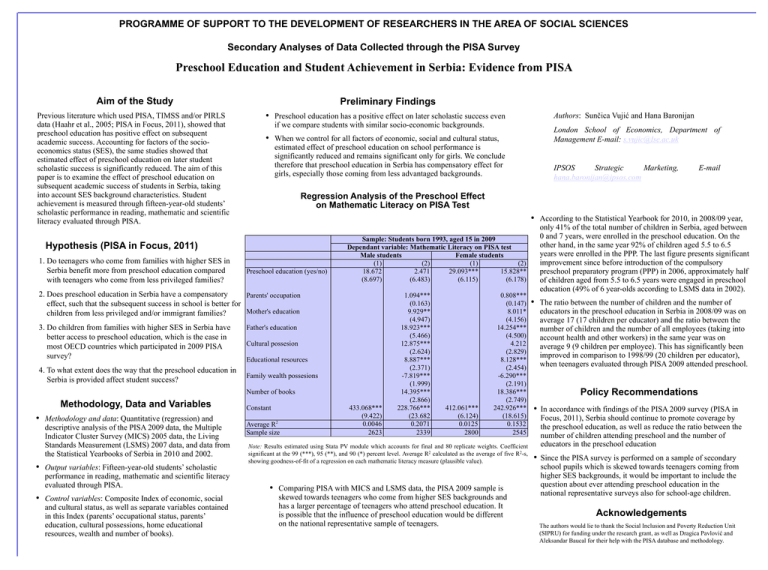
PROGRAMME OF SUPPORT TO THE DEVELOPMENT OF RESEARCHERS IN THE AREA OF SOCIAL SCIENCES Secondary Analyses of Data Collected through the PISA Survey Preschool Education and Student Achievement in Serbia: Evidence from PISA Aim of the Study Previous literature which used PISA, TIMSS and/or PIRLS data (Haahr et al., 2005; PISA in Focus, 2011), showed that preschool education has positive effect on subsequent academic success. Accounting for factors of the socioeconomics status (SES), the same studies showed that estimated effect of preschool education on later student scholastic success is significantly reduced. The aim of this paper is to examine the effect of preschool education on subsequent academic success of students in Serbia, taking into account SES background characteristics. Student achievement is measured through fifteen-year-old students’ scholastic performance in reading, mathematic and scientific literacy evaluated through PISA. Preliminary Findings • Authors: Sunčica Vujić and Hana Baronijan Preschool education has a positive effect on later scholastic success even if we compare students with similar socio-economic backgrounds. • London School of Economics, Department of Management E-mail: s.vujic@lse.ac.uk When we control for all factors of economic, social and cultural status, estimated effect of preschool education on school performance is significantly reduced and remains significant only for girls. We conclude therefore that preschool education in Serbia has compensatory effect for girls, especially those coming from less advantaged backgrounds. IPSOS Strategic Marketing, hana.baronijan@ipsos.com E-mail Regression Analysis of the Preschool Effect on Mathematic Literacy on PISA Test • According to the Statistical Yearbook for 2010, in 2008/09 year, only 41% of the total number of children in Serbia, aged between 0 and 7 years, were enrolled in the preschool education. On the other hand, in the same year 92% of children aged 5.5 to 6.5 years were enrolled in the PPP. The last figure presents significant improvement since before introduction of the compulsory preschool preparatory program (PPP) in 2006, approximately half of children aged from 5.5 to 6.5 years were engaged in preschool education (49% of 6 year-olds according to LSMS data in 2002). Hypothesis (PISA in Focus, 2011) 1. Do teenagers who come from families with higher SES in Serbia benefit more from preschool education compared with teenagers who come from less privileged families? 2. Does preschool education in Serbia have a compensatory effect, such that the subsequent success in school is better for children from less privileged and/or immigrant families? • 3. Do children from families with higher SES in Serbia have better access to preschool education, which is the case in most OECD countries which participated in 2009 PISA survey? 4. To what extent does the way that the preschool education in Serbia is provided affect student success? The ratio between the number of children and the number of educators in the preschool education in Serbia in 2008/09 was on average 17 (17 children per educator) and the ratio between the number of children and the number of all employees (taking into account health and other workers) in the same year was on average 9 (9 children per employee). This has significantly been improved in comparison to 1998/99 (20 children per educator), when teenagers evaluated through PISA 2009 attended preschool. Policy Recommendations Methodology, Data and Variables • • • Methodology and data: Quantitative (regression) and descriptive analysis of the PISA 2009 data, the Multiple Indicator Cluster Survey (MICS) 2005 data, the Living Standards Measurement (LSMS) 2007 data, and data from the Statistical Yearbooks of Serbia in 2010 and 2002. Output variables: Fifteen-year-old students’ scholastic performance in reading, mathematic and scientific literacy evaluated through PISA. Control variables: Composite Index of economic, social and cultural status, as well as separate variables contained in this Index (parents’ occupational status, parents’ education, cultural possessions, home educational resources, wealth and number of books). Note: Results estimated using Stata PV module which accounts for final and 80 replicate weights. Coefficient significant at the 99 (***), 95 (**), and 90 (*) percent level. Average R2 calculated as the average of five R2-s, showing goodness-of-fit of a regression on each mathematic literacy measure (plausible value). • Comparing PISA with MICS and LSMS data, the PISA 2009 sample is skewed towards teenagers who come from higher SES backgrounds and has a larger percentage of teenagers who attend preschool education. It is possible that the influence of preschool education would be different on the national representative sample of teenagers. • In accordance with findings of the PISA 2009 survey (PISA in Focus, 2011), Serbia should continue to promote coverage by the preschool education, as well as reduce the ratio between the number of children attending preschool and the number of educators in the preschool education • Since the PISA survey is performed on a sample of secondary school pupils which is skewed towards teenagers coming from higher SES backgrounds, it would be important to include the question about ever attending preschool education in the national representative surveys also for school-age children. Acknowledgements The authors would lie to thank the Social Inclusion and Poverty Reduction Unit (SIPRU) for funding under the research grant, as well as Dragica Pavlović and Aleksandar Baucal for their help with the PISA database and methodology.

